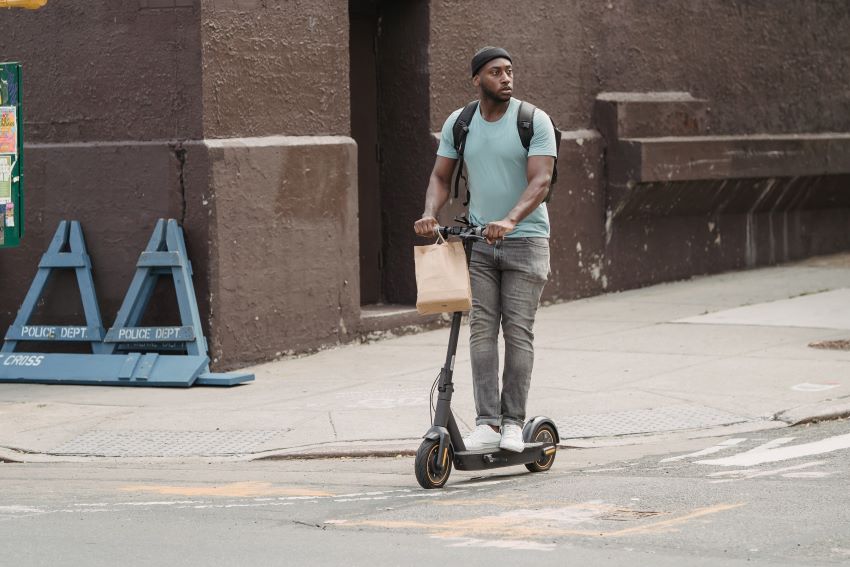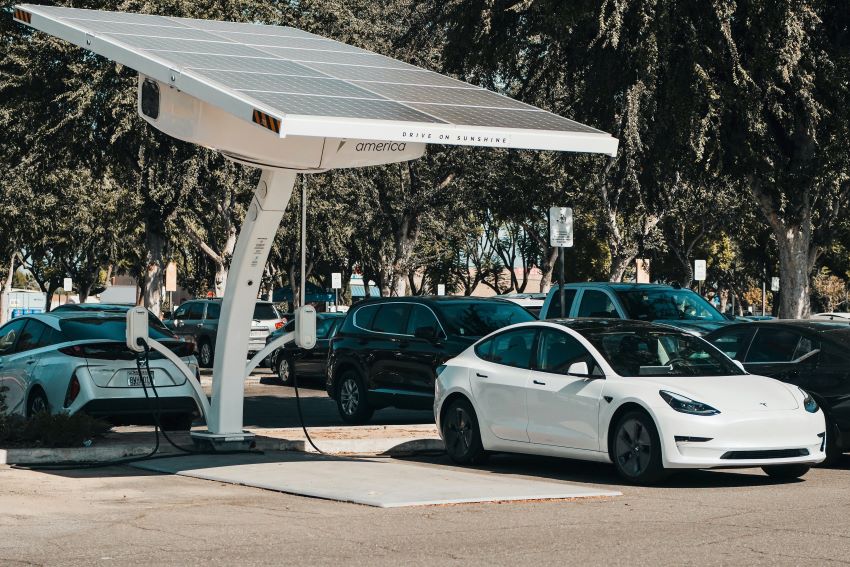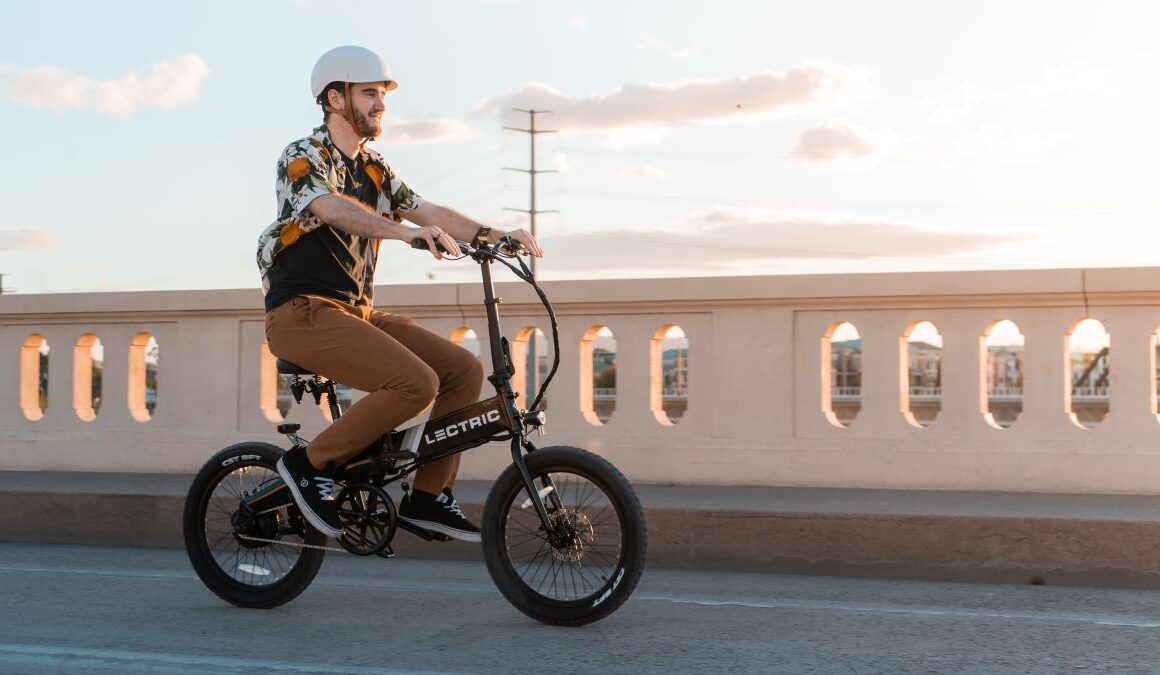Which E-Transportation Works Best for You?
There are many reasons to want to switch to electric-powered transportation, from climate change to gas prices, but let’s start with one that’s often overlooked — fun. Zipping around on e-vehicles like e-bikes, e-scooters, and e-skateboards is not only a wise environmental choice, but it’s also really fun.
“When you ride an e-bike, it lets you tap into a youthfulness that may have been dormant for the last 10 to 60 years,” says Levi Conlow, CEO and co-founder of Lectric eBikes. “Then you start using it for little trips and micro-adventures, like running to the pharmacy. You can explore your local city more, and [tourist] places you couldn’t see in a car. It opens you up to more.”
E-transportation is ramping up quickly in the U.S. E-bike sales grew nearly 50% last year, and some states such as Colorado and California are helping fuel that with incentive programs. Rentable e-scooters clutter the sidewalks in many towns, while more than 50% of consumers who intend to buy a car within two years plan on getting an EV or hybrid.
All of that demand is creating more choices, which means more planning to figure out which e-vehicle is best for your situation. Here are some aspects of different e-transportation methods to consider.
E-Bikes as Transportation
E-bikes are the most popular solution for commuting and running errands around town. A decent one starts around $1,000, but can go way up from there, especially with higher-end mountain bike models.

Benefits of E-Bikes vs. E-Scooters:
- Sitting down is more comfortable on longer rides (but some scooters do offer seats).
- E-bikes’ bigger wheels and frames handle obstacles better.
- They can travel longer ranges, in general.
- You can still get decent exercise if you choose to pedal.
- If you run out of battery power you can still pedal your way home.
- It’s easier to carry more and heavier items, and you can usually install cargo racks.
- Some are rated for child seats, but e-bikes’ faster speeds come with some risk.
Drawbacks of E-Bikes vs. E-Scooters:
- Bulkier to store.
- Heavier to maneuver, so not as good in congested areas.
- More likely to get stolen, since you’re less likely to park it indoors.
- Too heavy to carry to an upstairs apartment or office.
Best for low-density or less-congested areas, longer travel distances, carrying cargo like groceries, and elderly or physically impaired riders. Also, “We’re a hit in the RV and van community for those who want to zip around from their camp,” says Conlow. “That’s why e-bikes are so awesome, they can meet so many people’s needs, regardless of who you are.”
E-Scooters as Transportation
A decent e-scooter costs less than an e-bike. They’re not quite as practical or comfortable for most people, but considering that most of the time when we jump in the car, we drive fewer than 10 miles, they can still replace a lot of quick trips.

Benefits of E-Scooters vs. E-Bikes:
- Typically less expensive.
- More maneuverable, so easier to navigate obstacles, especially on busy streets.
- Easier to carry upstairs to an office or apartment.
- Requires less space to store.
- Easier to take on a bus or subway, or load into your car so you can park outside of congested areas and e-scooter into them.
Drawbacks of E-Scooters vs. E-Bikes:
- Harder for some people to balance.
- No option to pedal for increased range (scooters are difficult to use without power).
- Most don’t have seats.
- Only cargo carrying option is a backpack.
- Can be as heavy as an e-bike.
- No option to get exercise while riding.
Best for larger cities and congested areas, shorter travel distances, people who frequent offices and apartments, places where bicycle theft is an issue, and combining modes of transportation.
E-Skateboards for Transportation
If you love skateboarding, choosing an e-board is a no-brainer. For everyone else, there’s more of a gray area.

Benefits of E-Skateboards vs. E-Scooters:
- Fun to carve, similar to a longboard; more exciting in general.
- Weigh less, so easier to carry into buildings.
- Less bulky, so better for mixing with busses and subways; easier to store.
- Can be hooked to a backpack to carry.
- More maneuverable, if you’re an adept rider.
- Most come with regenerative braking systems.
- Easy to ride when out of battery (hub-driven boards only).
Drawbacks of E-Skateboards vs. E-Scooters:
- Harder to learn.
- Less stable, and therefore arguably less safe.
- Usually less range.
- Less practical and comfortable for longer distances.
- Difficult to use when the battery dies (belt-driven boards only).
Best for people who love skateboarding, people who frequent offices and apartments, larger cities and congested areas, shorter travel distances, and combining modes of transportation.
Electric Cars for Transportation
For people whose location and life circumstances require a car, there’s really no choice to be made here. But if you find that you only rarely use a car, like for road trips or transporting bulky items, you might find that an EV car share or rental is a better option than buying one outright.

Benefits of Electric Cars vs. E-Bikes:
- Multiple passengers.
- More cargo capacity.
- More comfortable in inclement and hot weather.
- Travels longer distances.
- Safest for transporting children.
Drawbacks of Electric Cars vs. E-Bikes:
- More expensive to buy and charge.
- Harder to charge (can’t just plug it into any outlet).
- Need a parking spot.
- Need registration and insurance.
Best for families, dogs, longer distances, carrying cargo, inclement weather, and those with physical disabilities.
Getting Creative With E-Transportation Options
For many of us, the best option may be a combination of an e-bike or scooter, bus or subway, and cars. Also, keep in mind that the best solution is not always to just go out and buy something new. For example, if you have a gas-powered car that’s still running fine, it’s probably not more environmentally sound to replace it with an EV, especially if you don’t use it much.

Features To Consider When Buying E-Bikes, E-Scooters, and E-Skateboards
Whichever form of e-transportation you’re considering, the main features to keep in mind are:
- Range, battery storage capacity, and charge time
- Speed, not just top speed but whether it will keep up with traffic
- Cost
- Available accessories (baskets, seats, etc.)
- Serviceability (is there someone in town who can fix it)
- Manual pedaling/pushing vs. electrical pedal assist and throttle control
- Drivetrain options, such as dual motors, manual pedaling pushing, electric pedal assist, throttle control, and regenerative braking
- Weight and size (packability, portability, and storage needs)
“With portability comes convenience,” says Conlow. “If riders feel inconvenienced, they’re not going to ride it.”
Note that manufacturer statements of a vehicle’s range are not always accurate. “Anyone can just rate a range whatever they want,” says Conlow. “You have to actually look at how big the battery pack itself is. What we do with our site, and what we hope becomes more common, is putting actual real-world range tests so riders can make sure it’s going to fulfill their needs.”
What’s the Best E-Transportation Choice for the Climate?
If we envision the end goal as a future where the grid used to power manufacturing and recharging comes from renewable energy — and cities are no longer overwhelmingly car-centric — then any e-choice is a good one to work toward that outcome. In the reality of this moment, most experts still agree that electric is very much the way to go.
For all options, a current environmental hurdle is batteries. Ideally, before too long, science will find solutions for replacing the metals in them that require harmful mining practices, as well as a more streamlined recycling process. This sees hopeful, as battery technology continues to rapidly progress.
Otherwise, scooters are the biggest gray area, mostly because so many of them are used as community rentals. They are often transported to recharge stations in fossil-fuel-burning trucks and have short life spans due to abuse and damage. One study suggests that because of these factors, community scooters are no better than conventional cars for saving carbon. However, if you buy one and take good care of it for at least a couple of years, the same study suggests it will pay off environmentally.
And finally, another consideration is what form of transportation your new e-bike or scooter is replacing. If it’s replacing a gas-powered car or motorcycle, then it will most certainly alleviate emissions. However, if you’re replacing walking, bicycling or public transportation, you’re likely increasing your carbon footprint, as a recent study in Zurich found.
Feature image courtesy of Lectric eBikes


